Showing 121–132 of 247 results
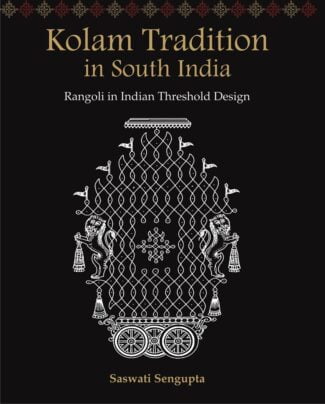
Kolam is propitious threshold drawings by women defining religious and cultural space in South India. Integrating the entire Tamil community in kinship, ephemeral kolam structure is precise and beautiful prayer for protection and prosperity. Aesthetic experience of kolam is in its symmetrical composition that correlates with our concept of the cosmos.
Kolam is propitious threshold drawings by women defining religious and cultural space in South India. Integrating the entire Tamil community in kinship, ephemeral kolam structure is precise and beautiful prayer for protection and prosperity. Aesthetic experience of kolam is in its symmetrical composition that correlates with our concept of the cosmos. In the geometric grid of kolam the number of dots called pulli algorithmically guides the number of crossings that requires overall smoothening of edges in the design. Large number of infinite knot pattern follows a set of elegant mathematical rules that is at the same time artistic. According to Marcia Ascher, Emeritus Professor of Mathematics at Ithaca College, the Principles of Numbers in kolam is dynamics and motion in matter demonstrating multiplicity of the void. Kolam drawings trace unilinear path with singular regularity expressive of polyrhythmic music. Dancer Chandralekha observed that kolam is a kind of yoga. Kolam as an art form has entered computer graphics, ethnomathematics and ethnomusicology, textile industry, therapeutic applications and tactile spatial education for visually challenged. The pervasive threshold drawing of Tamil Nadu are unique but at the same time kolam is extendable to the tradition of tracing patterns in sand produced by several cultures in Africa and South Pacific islands as well as to the brilliant mosaics of ancient Rome.

The romantic Krishna finds a textual presence for the first time in the Bhagavata Purana and then for a thousand years we celebrate that Krishna through heart-throbbing poetry. Krishna is indeed both the kavi and the kavya, rasa and rasika, the shabda and the artha, He is Purusha and Prakriti.
The romantic Krishna finds a textual presence for the first time in the Bhagavata Purana and then for a thousand years we celebrate that Krishna through heart-throbbing poetry. Krishna is indeed both the kavi and the kavya, rasa and rasika, the shabda and the artha, He is Purusha and Prakriti. Krishna dances and frolics, speaks and sings, and shringara in its many colours comes alive for us through kavya. We are the gopis of Vrindavana, the nayikas of Ritikavya as Krishna comes alive not through religious rites and rituals but through the joy of poetry and painting and we acdaim krishna svayamkavyam.
After we have experienced the aesthetic pleasure of the love of Krishna we realize that all love in this world is that of Krishna, the hushed words of romance between a man and a woman are those of Krishna and Radha, all poetry that celebrates romantic love is that of Krishna, so that we can turn the sentence around and say kavyam svayam krishna.
We invite you to immerse yourself in the beautiful poetry of Krishna, through the melody and lyrics let His madhurya wash over you like the waves of the Yamuna and his many-splendoured persona make your mind dance like the birds and blossoms of Vrindavana.
Harsha V. Dehejia beautifully weaves a tapestry of Krishna Shringara Kavya enriched by the colours and textures of paintingsby the noted artist Vijay Sharma.
The book assures the r eader both the joy of poetry and the visual delight of painting.

This second volume of Krishna in the Harivamsha contends that the child and adult Krishnas are indeed one and the same. The initiation by guru Kashya Sandipani, the construction of the city of Dvaraka, and the fights involving Pradyumna and Aniruddha are among the best known episodes analysed in this volume.
This second volume of Krishna in the Harivamsha brings together texts written between 2000 and 2015, more than half of which are of more recent vintage than those included in Volume I. While Krishnas biography is clearly divided into two large units, childhood and adulthood the kshatriya (warrior) of the second period manifesting himself first as a gopa (cowherd) it is important to note that both sections of the biography are similarly structured and carry an identical message. This book contends that the child and adult Krishnas are indeed one and the same.
The initiation by guru Kashya Sandipani, the construction of the city of Dvaraka, and the fights involving Pradyumna and Aniruddha are among the best known episodes analysed in this volume. It is the oft-neglected Harivamsha version of these well-known stories that is studied here, version that has been passed over despite its early date of composition.
An unstated assumption still influences a great deal of Harivamsha research. Many scholars assume that an addition of this sort to the Mahabharata can be little more than a collection of ancient records bearing witness to the primitive mentality of a people unable to think logically. On this view, the Harivamsha becomes reduced to a pile of documents of diverse origins. The articles contained in this volume take the opposite view. Krishnas biography, which at first blush might appear to be an amalgam of various stories, proves in fact to be a skilful construction which conveys a clear message.

The thirteen texts of this book address various aspects of Krishnas childhood in the Harivamsha. It demonstrates that these stories of Krishnas childhood were carefully composed by brahmanas who knew fully well what they were doing.
Written over a thirty-year period, the thirteen texts of this book some of which have been updated, others translated from the original French address various aspects of Krishnas childhood in the Harivamsha. As a part of a continuous effort to better understand this oft-neglected complement to the Mahabharata, the present book demonstrates that these stories of Krishnas childhood were carefully composed by brahmanas who knew fully well what they were doing.
During the ten or so years he spends as a herder in the forest surrounding Mathura, Krishna prepares himself to kill the evil king Kamsa: when packs of wolves spring from the hairs of his body, he manifests his destructive power; he appears as a true avatara when he dives into the Yamuna to subdue the snake Kaliya; he reveals himself as a new Brahma able to create a new world when he uplifts Mount Govardhana with which he has just identified himself, then sheltering cows and herders in his own body.
It is authors contention throughout these chapters that these episodes cannot be dismissed as a hotchpotch of legends borrowed from the Abhiras or similar pastoral tribes. Neither does one do justice to the genre when one reinterprets the story symbolically, as if it were the product of an overactive imagination. Rejecting these positions, the author instead attempts to show here how these talented storytellers carefully crafted a narrative, often using material drawn from their own Vedic tradition, in order to address the new concerns of their audiences.
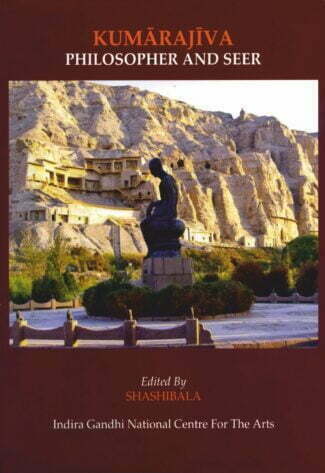
It is a compendium of recent researches on the brilliance that ushers through Kumarajiva’s legacy, enshrined in thousands of monasteries in China, Korea and Japan, preserving the heritage. His works inspired members of Imperial houses, Emperors, writers and artists, pilgrims and philosophers.
Kumarajiva, (Jiumóluóshi in Chinese), a philosopher and seer, had a long cherished mission: propagation of the true spirit of Buddhism. He broke political, geographical, cultural and linguistic barriers; travelled through barren lands and rivers, mountains and forbidding terrains to bequeath to us a casket of sacred sutras as the most authoritative presentations by translating them from Sanskrit into Chinese. He created pure, boundless and unthinkable versions of the sutras as an obeisance to the sacred voice so that one could bathe in the pure pond of the Dharma.
Kumarajiva: Philosopher and Seer is a compendium of recent researches on the brilliance that ushers through his legacy, enshrined in thousands of monasteries in China, Korea and Japan, preserving the heritage – his translations of the sacred Sanskrit texts copied over the last sixteen centuries. The life of Kumarajiva was unique in every aspect. His works inspired members of Imperial houses, Emperors, writers and artists, pilgrims and philosophers. His angelic presence can still be felt in the monastic establishments, in the sound of recitation of sutras and in the lives of the people that have been inspired over the centuries by his translations.
The researches done by scholars from world academia are included in the present volume on his date of birth, the towns and villages where he spent his life from childhood to nirvana, historically important events of his life, his contemporaries, his contribution to the cultural sphere of East Asia especially defining a new road for Mahayana Buddhism, philosophical theories and vision, comparative studies of his translations and echoes of his translations in Chinese literature.
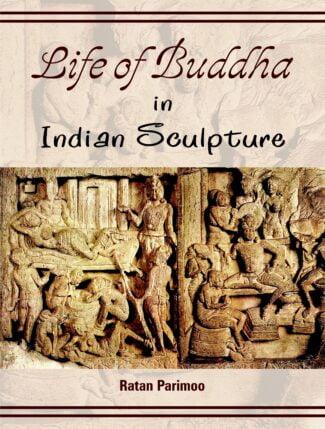
The book traces the beginning of narrative compositions in reliefs depicting the life of the Buddha and analyzes these sculptural depictions of events relating them to biographical texts on him. Supported by over 210 illustrations including drawings and photographs, the work reveals the process of symbolization in visual forms and participation of the sculptors in the process.
The life of the Buddha has been a great source of perennial inspiration to scholars, artists and poets since the early times. Many events from the life of the Buddha have inspired some of the greatest relief compositions in Indian art, which have been depicted in sculptures and monuments.
Tracing the beginning of narrative compositions in reliefs delineating the life of the Buddha, the book analyzes these sculptural depictions of events in the context of several biographical texts on him. The episodes represent the Buddhas birth, enlightenment, first sermon and miracle at Shravasti, descent from Tuùita heaven, subduing of Nalagiri, culminating with mahaparinirvana. The book explores how some of Buddhas basic teachings are linked with certain specific episodes of his life. It highlights the difference between representations of the same events by artists at various periods and places and the differences between the textual description and its sculptural counterpart. It also undertakes a survey of the inspiration provided by the theme of the Buddhas life to devotees and artists in other Asian countries as revealed in their iconography and sculpture.
Supported by over 210 illustrations including drawings and photographs, it reveals the process of symbolization in visual forms and participation of the sculptors in the process. It shows that the sculptural reliefs provide a fascinating insight into the creative mind of the Indian artist: how he invented visual devices and integrated them into the formal structure and the story content and imparted meanings in each sculptural relief. The volume will be essential reading for students and scholars of art history and Buddhist art in particular.
Mahāmudrā and Atiyoga are particular forms of Buddhist spirituality: Mahāmudrā, the ‘Great Seal’, is considered by Tibetan teachers to be the essence of both the short path and the final instructions that conclude the gradual common and esoteric paths of Buddhist doctrines; Atiyoga or ‘Extreme Union’ represents the Buddhist Dzogchen or ‘Great Completeness’ doctrine.
This volume comprises commentaries on and the transliteration of some ancient Tibetan texts, authored by Buddhist mystics and Tāntric teachers of Mahāmudrā and Atiyoga.
Translated from the Italian, the book is based on oral instructions received by the author from Tibetan teachers. It discusses the insights of the sacred texts and the commentaries on them with respect to the nature of consciousness and phenomenal existence, meditation on guru and deity, Tāntric sexuality, and the introduction to and realization of non-dual awareness.
Simple to understand, the commentaries explain the many meanings of the texts and the symbols and images used. They motivate readers to observe for themselves and personally experience the significance of the traditions and the application of their methods of practice.
The volume will be useful to all students and scholars of Buddhist studies, particularly of the Buddhist Tàntric tradition, and of Tibetan religion and culture.

The book Make Time for Yourself Its Your Time is a text written from a very personal standpoint, in the context of the authors spiritual life as a monk. Nothing in this world has eternal value. Use your time and dont waste it. . . . Time is for most of us a luxury good. Making time for yourself and giving time to others is a source of joy that enriches our lives. The quiet time we devote to prayer or meditation gives us strength to master our lives and enhances our spirituality.
The book Make Time for Yourself Its Your Time is a text written from a very personal standpoint, in the context of the authors spiritual life as a monk. Nothing in this world has eternal value. Use your time and dont waste it. . . . Time is for most of us a luxury good. Making time for yourself and giving time to others is a source of joy that enriches our lives. The quiet time we devote to prayer or meditation gives us strength to master our lives and enhances our spirituality.
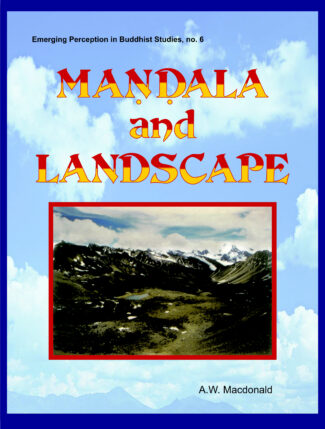
This volume highlights, perhaps for the first time, the techniques whereby mandala-schemes are projected in thought, belief and action, on to widely differing natural landscapes. The emphasis is on geographical contexts and socio-cultural traditions.
Since the publication in English of the Theory and Practice of Mandala by Giuseppe Tucci in 1961, our knowledge of the subject has increased considerably. Two-dimensional paintings (Tibetan: thanka, Skt.: paubha) have been displayed in many art exhibitions, reproduced photographically, and analysed in readable books as well as in articles in specialised journals. Three-dimensional mandalas like, for instance, the Barabadur in Java recently renovated by UNESCO, have been visited by many thousands of tourists as well as pilgrims. In America, Europe and Asia, monks have made and unmade numerous sand-mandalas openly, in public. Mandalas are, indeed, much less secret than they used to be. Yet, up to now, mandalas have largely been studied outside the context of their use: in museums, in exhibitions and in libraries This volume highlights, perhaps for the first time, the techniques whereby mandala-schemes are projected in thought, belief and action, on to widely differing natural landscapes. Putting together the research findings of a group of Buddhist scholars from America, Austria, England, France, Germany and New Zealand, Professor Macdonald tries to underscore the linkages between mandalas and landscapes in varying eco-systems between Afghanistan and Japan with special focus on their geographical contexts and socio-cultural traditions. Each of the ten studies, included here, is supported by relevant illustrative material and extensive bibliographical references. Embodied in Mandala and Landscape are the research results from field-work carried out in China, Nepal, Pakistan, Japan and Tibet. It is, as such, invaluable to scholars of Buddhist Studies, specially the researchers involved with the mandalas in South Asia and elsewhere.
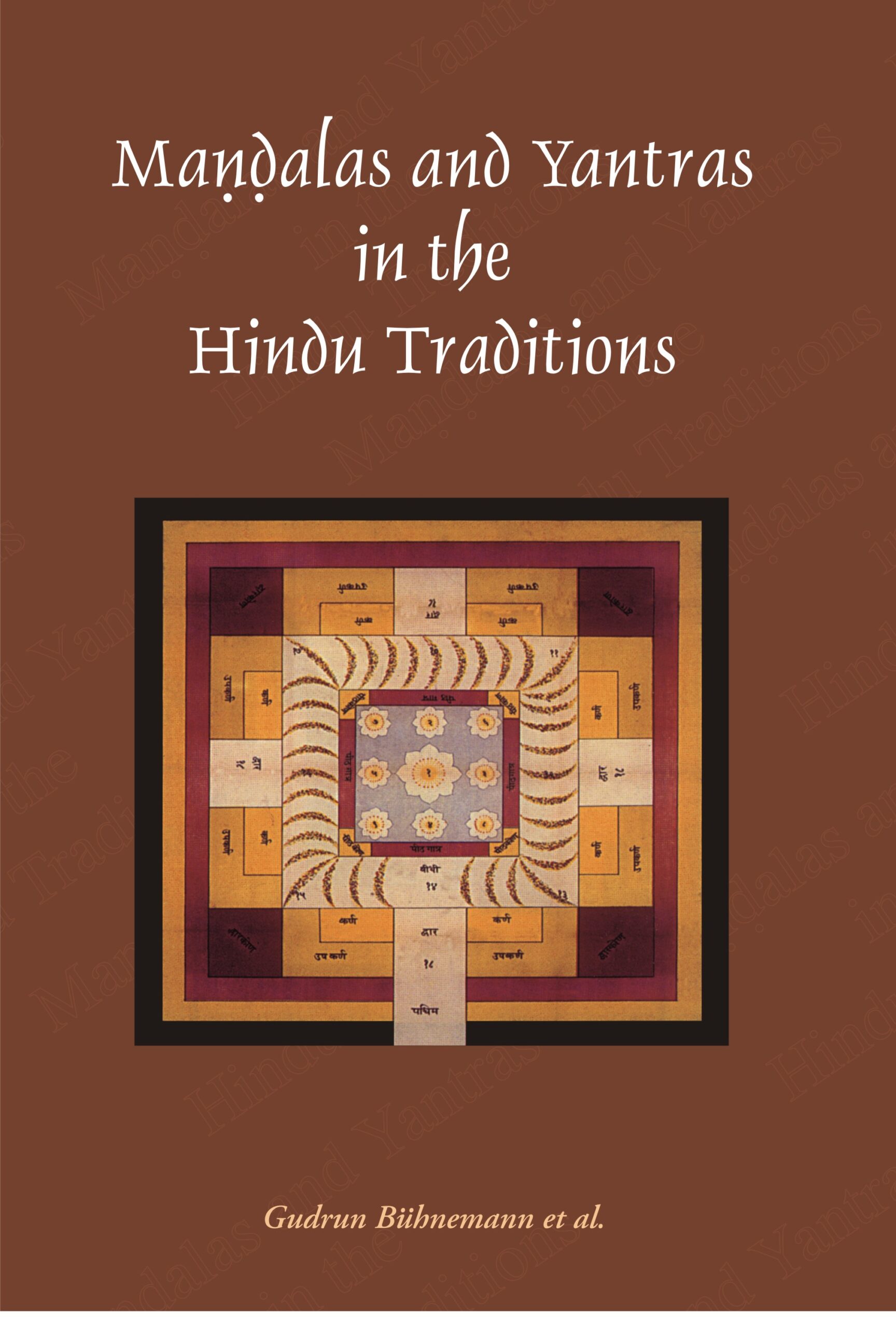
In recent years mandalas have attracted much interest and the main focus of such interest has been directed towards Tibetan mandalas. But mandalas are found across a wide spectrum of South Asian religious traditions as well including those of the Hindus and Jains. Hindu mandalas and yantras have hardly been researched. This book attempts to fill this gap.
Mandalas and Yantras are used in rites of worship in a wide range of Hindu, Buddhist and Jaina religious traditions. This volume has scholarly articles that deal with the little-researched subject of mandalas and yantras in specific Hindu traditions-Smarta, Pancaratra, Shaiva and Shakta traditions. The articles discuss mandala-like arrangements and the navagrahamandala in the ritual practices of Smarta Brahmins in Maharashtra. Use of mantras and yantras in the Vaishnava Pancaratra tradition is studied on the basis of passages from the Samhitas. They concentrate on the Siddhanta school, pre-11th century Shaiva Mandalas expressing the link between branches of Shaivism and between Shaiva and non-Shaiva groups, and description of use of mandalas in Abhinavaguptas Tantraloka. The shricakra is explored as a cosmic than a ritual diagram which has immense religious/spiritual significance. A slightly different attempt examines application of vastumandala, as described in Varahamihiras Brihatsamhita, in temple architecture. Parallels are drawn between the rituals taken up here and others like Buddhist tantric initiation rites. The writings consult many religious texts including the Sharadatilaka, the 11th-century Yoginihridaya and the Svacchandatantra to understand mandala structure and rituals. A highlight of the volume is the inclusion of numerous reproductions of mandala designs and other drawings and extensive notes. The volume will be useful for Indologists studying Hindu religious traditions, particularly mystical rituals and rites of Vaishnava, Shaiva and Shakta traditions.

In recent years mandalas have attracted much interest and the main focus of such interest has been directed towards Tibetan mandalas. But mandalas are found across a wide spectrum of South Asian religious traditions as well including those of the Hindus and Jains. Hindu mandalas and yantras have hardly been researched. This book attempts to fill this gap.
Mandalas and Yantras are used in rites of worship in a wide range of Hindu, Buddhist and Jaina religious traditions. This volume has scholarly articles that deal with the little-researched subject of mandalas and yantras in specific Hindu traditions-Smarta, Pancaratra, Shaiva and Shakta traditions. The articles discuss mandala-like arrangements and the navagrahamandala in the ritual practices of Smarta Brahmins in Maharashtra. Use of mantras and yantras in the Vaishnava Pancaratra tradition is studied on the basis of passages from the Samhitas. They concentrate on the Siddhanta school, pre-11th century Shaiva Mandalas expressing the link between branches of Shaivism and between Shaiva and non-Shaiva groups, and description of use of mandalas in Abhinavaguptas Tantraloka. The shricakra is explored as a cosmic than a ritual diagram which has immense religious/spiritual significance. A slightly different attempt examines application of vastumandala, as described in Varahamihiras Brihatsamhita, in temple architecture. Parallels are drawn between the rituals taken up here and others like Buddhist tantric initiation rites. The writings consult many religious texts including the Sharadatilaka, the 11th-century Yoginihridaya and the Svacchandatantra to understand mandala structure and rituals. A highlight of the volume is the inclusion of numerous reproductions of mandala designs and other drawings and extensive notes. The volume will be useful for Indologists studying Hindu religious traditions, particularly mystical rituals and rites of Vaishnava, Shaiva and Shakta traditions.
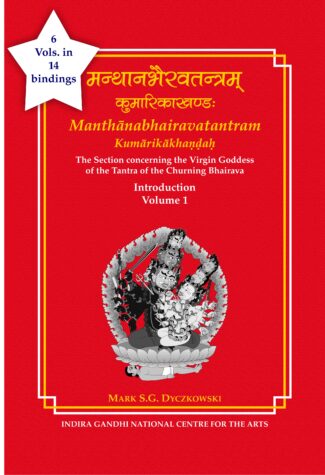
The 24,000 verses long Manthanabhairavatantra is the most important and extensive Tantra dedicated to the goddess Kubjika who is exclusively worshipped in the Kathmandu Valley. The section, Kumarikakhanda, offered here in 14 volumes, presents Kubjikas unique historical importance in the extraordinary richness of the inner, spiritual dimensions of her cult.
The Manthanabhairavatantra is about 24,000 verses long and is divided into three sections (khanda). The one edited and translated here is the Kumarikakhanda. Along with the Kubjikamata, the Manthanabhairavatantra is the most important and extensive Tantra dedicated to the worship of the goddess Kubjika. Although originally an Indian goddess, Kubjika is almost exclusively worshipped in the Kathmandu Valley, where her cult has been kept scrupulously secret by Newar initiates for centuries. Almost all the manuscripts of her Tantras and related literature have been found there.
Kubjika is a powerful development of Malini, the principal goddess of the Trika Tantras and Kali of the Kashmiri Krama tradition. Her cult belongs to a chain of early Kaula systems that culminate with that of the goddess Tripura and so sheds considerable light on them. Kubjikas unique historical importance is mirrored in the extraordinary richness of the inner, spiritual dimensions of her cult. These are explored in detail in the introduction to the edition and translation of the text with extensive references from mostly unpublished Kubjika Tantras and those of related schools.
The work took close to two decades to produce. In this time numerous working editions of unpublished Tantras and related texts were prepared by the author with the help of a team of five trained assistants.
| There are no products |